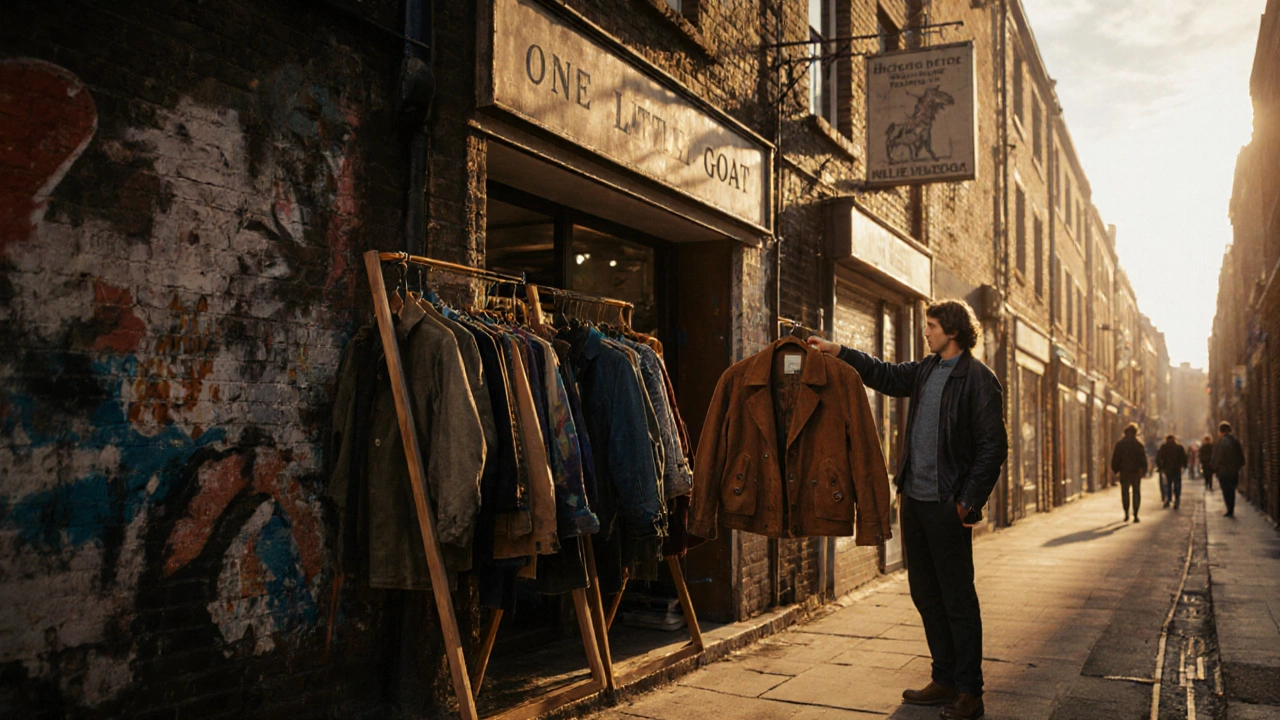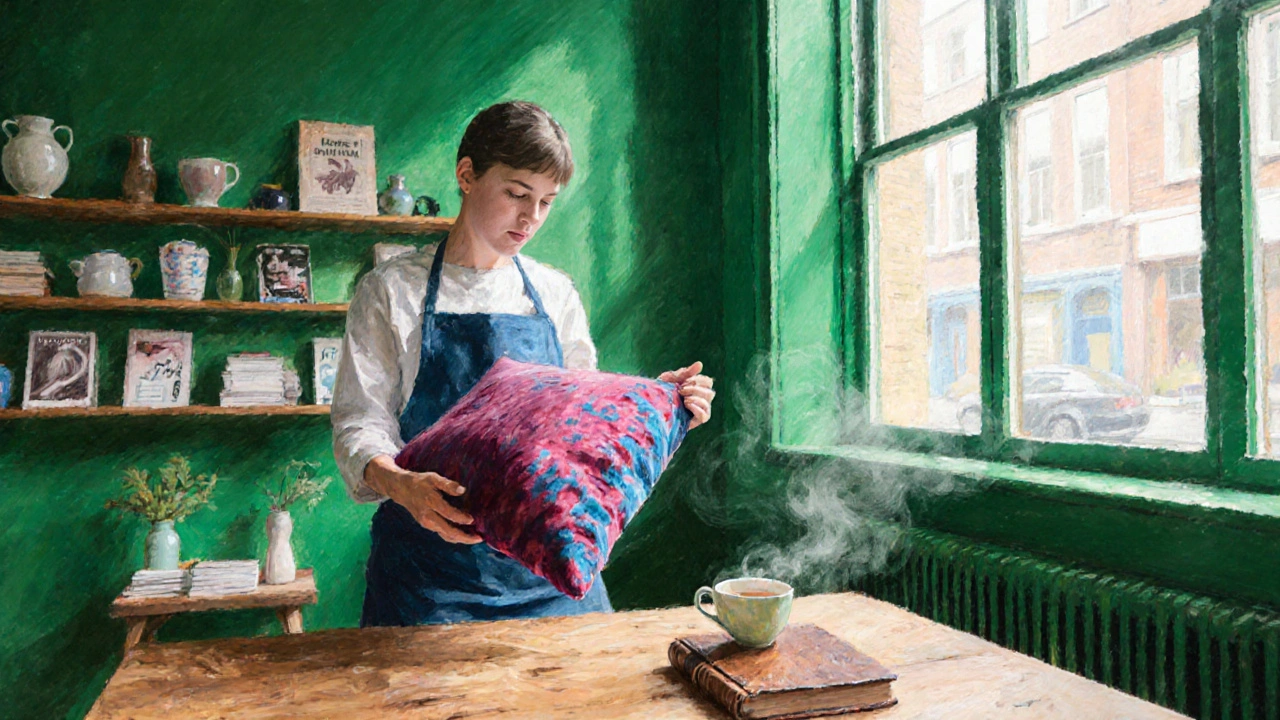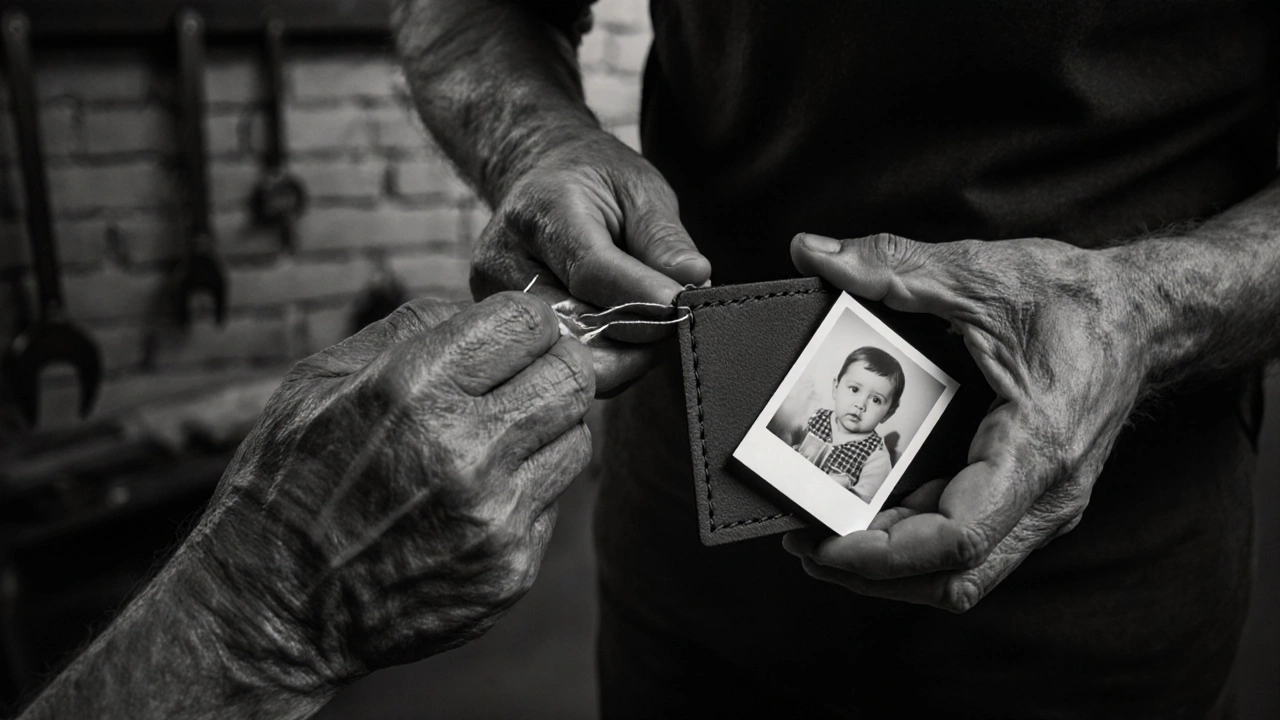
Shoreditch isn’t just another part of London. It’s where street art meets vintage threads, where a 1980s warehouse became a cult sneaker shop, and where you can find a hand-stitched leather bag that no one else in the city owns. If you’re looking for something real - not chain-store plastic - this is where you go. Forget the big names on Oxford Street. Shoreditch’s soul lives in its small shops, run by people who care more about craft than commerce.
Where the Locals Actually Shop
You won’t find a single H&M or Zara in the heart of Shoreditch’s best streets. Instead, you’ll bump into people carrying bags from One Little Goat, a tiny shop on Redchurch Street that’s been selling curated vintage since 2012. They don’t do sales. They don’t do online. They just pick one thing at a time - a 1970s suede jacket, a pair of Japanese work boots, a ceramic mug from a Berlin artist - and let it find the right person. Their stock changes daily. You could walk in Monday and leave with a rare Japanese denim jacket. Come back Friday, and it’s gone. That’s the point.
Down the road, House of Hackney started as a print studio in a backroom. Now, their bold, hand-screened wallpapers and velvet cushions are in homes from Brooklyn to Brisbane. But their Shoreditch store still feels like a secret. The walls are painted in their signature ‘Carnival’ green, and the staff know your name if you’ve been twice. They don’t push anything. They’ll hand you a cup of tea and show you how the fabric was dyed with beetroot and indigo.
What Makes a Boutique ‘Independent’?
Not every small shop is independent. Some are owned by big conglomerates using ‘artisan’ as a marketing word. True independent boutiques in Shoreditch are run by designers, makers, or collectors who live nearby. They source locally. They repair your shoes. They remember your size. They’ll call you if something you liked comes back in stock.
Take Shoreditch Tailors on Brick Lane. They don’t sell suits off the rack. You book a 90-minute session. They take 18 measurements. They show you 12 wool samples from Yorkshire mills. Then they make your jacket - in four to six weeks. One customer came back last year with his 12th suit. He told the tailor his son was getting married. The tailor added a hidden pocket inside the lining. Inside it? A photo of the son’s first birthday. That’s not retail. That’s relationship.
Compare that to a department store where a salesperson scans your size and hands you a plastic-wrapped jacket from Bangladesh. One’s transactional. The other’s personal.
Hidden Gems You Won’t Find on Google Maps
Some shops don’t even have websites. You have to know someone who knows someone.
Brotherhood is tucked behind a greengrocer on Cheshire Street. No sign. Just a black door with a brass knocker. Inside, it’s a mix of handmade ceramics, limited-run zines, and prints from underground artists. The owner, a former printmaker from Brighton, only takes 12 new pieces each month. He doesn’t post them online. You have to show up. If you’re lucky, he’ll be there with a pot of coffee and tell you why he chose that particular glaze.
Then there’s Stitch & Co. - a tiny sewing studio turned boutique on Princelet Street. They sell clothes made from deadstock fabric - fabric that was going to be thrown out by big fashion brands. A dress here might cost £85, but it’s made from material that would’ve ended up in a landfill. The owner, a former pattern cutter for a high-street brand, left after she saw 14,000 unsold garments burned in one season. Now she makes 30 pieces a month. Each one is numbered. Each one tells a story.

What to Buy (and What to Skip)
Shoreditch isn’t a place to buy souvenirs. It’s a place to buy things that stick with you.
- Buy: Handmade leather goods from Leather & Co. - their belts last 10+ years and come with a lifetime repair promise.
- Buy: Small-batch candles from Wick & Co. - scents like ‘Wet Pavement After Rain’ and ‘Old Bookshop’ are mixed in a basement studio using soy wax and essential oils.
- Buy: Vintage cameras from Shutter & Co. - they test every one, clean the lenses, and give you a printed guide on how to use it.
- Skip: Anything labeled ‘London Exclusive’ with a price tag over £200 unless you know the maker. Too often, it’s mass-produced with a fake story.
- Skip: ‘Boho’ scarves from stalls on Brick Lane that look the same as the ones in Camden. Check the tag. If it says ‘Made in China,’ walk away.
When to Go (and When to Avoid)
Shoreditch is busiest on weekends. That’s when the Instagram influencers come. If you want quiet, go on a weekday. Tuesday and Wednesday afternoons are golden. The shopkeepers are relaxed. They’ll chat. They’ll let you try things on without rushing you.
Avoid the first weekend of every month - that’s when the pop-up markets take over. Crowds swell. The real shops close early. The vibe shifts from local to tourist trap.
Also, don’t expect everything to be open on Sundays. Many boutiques close. That’s intentional. The owners need a day off. It’s part of their ethics.

How to Support These Shops Beyond Buying
You don’t have to spend money to help. Here’s how:
- Leave a genuine review on Google or Instagram. Not ‘love it!’ - say what you loved. ‘The candle smells exactly like my grandma’s kitchen.’ That means more than a star rating.
- Ask questions. ‘Where did you get this fabric?’ ‘Who made this?’ Most owners love talking about their work.
- Bring a friend. Not to shop - to listen. The stories behind these shops are worth hearing.
- Don’t haggle. These aren’t market stalls. The price is set to cover fair wages and materials.
These shops aren’t trying to be the biggest. They’re trying to be the best. And they’re winning - not by volume, but by meaning.
What’s Next for Shoreditch’s Independent Scene?
There’s pressure. Rents are rising. Chains are circling. A coffee chain tried to open next to One Little Goat last year. The community rallied. 1,200 people signed a petition. The landlord backed down.
That’s the power of local. It’s not just about what you buy. It’s about who you stand with.
Shoreditch’s boutiques are more than stores. They’re archives of creativity. They’re places where a single stitch, a single brushstroke, a single kiln firing can carry years of work. They’re proof that commerce doesn’t have to be cold. It can be warm. Human. Alive.
Go with curiosity. Leave with something that matters.
Are independent boutiques in Shoreditch more expensive than chain stores?
Some are, but not because they’re trying to rip you off. A £120 hand-stitched leather bag from a Shoreditch maker might cost the same as a mass-produced one from a big brand - but it lasts 10 times longer. You’re paying for materials, fair wages, and craftsmanship, not marketing. Many shops offer free repairs for life, which saves money over time.
Can I find sustainable fashion in Shoreditch boutiques?
Yes - and it’s everywhere. Shops like Stitch & Co. use deadstock fabric, Wick & Co. makes candles with soy wax and essential oils, and Leather & Co. sources hides from UK farms with ethical standards. Many boutiques openly share their supply chain. Ask. They’ll show you.
Do Shoreditch boutiques ship internationally?
Some do, but many don’t. Smaller shops focus on local customers and limited stock. If they do ship, it’s usually through small courier services - not Amazon. Check their website or ask in person. Some offer to hold items for you if you’re visiting from abroad.
What’s the best time of year to shop in Shoreditch?
Autumn and spring are ideal. Summer is crowded with tourists. Winter brings quiet, but some shops close early. Autumn is when new collections drop - vintage finds, hand-dyed textiles, limited-edition prints. You’ll find the freshest stock then. January is good for post-holiday sales, but only a few shops do them.
Is Shoreditch safe to shop in at night?
Yes. The main shopping streets - Redchurch, Brick Lane, and Shoreditch High Street - are well-lit and busy until late. Most boutiques close by 7 PM, but the area stays active with cafes and bars. Stick to the main roads. Avoid side alleys after dark, as you would in any city.